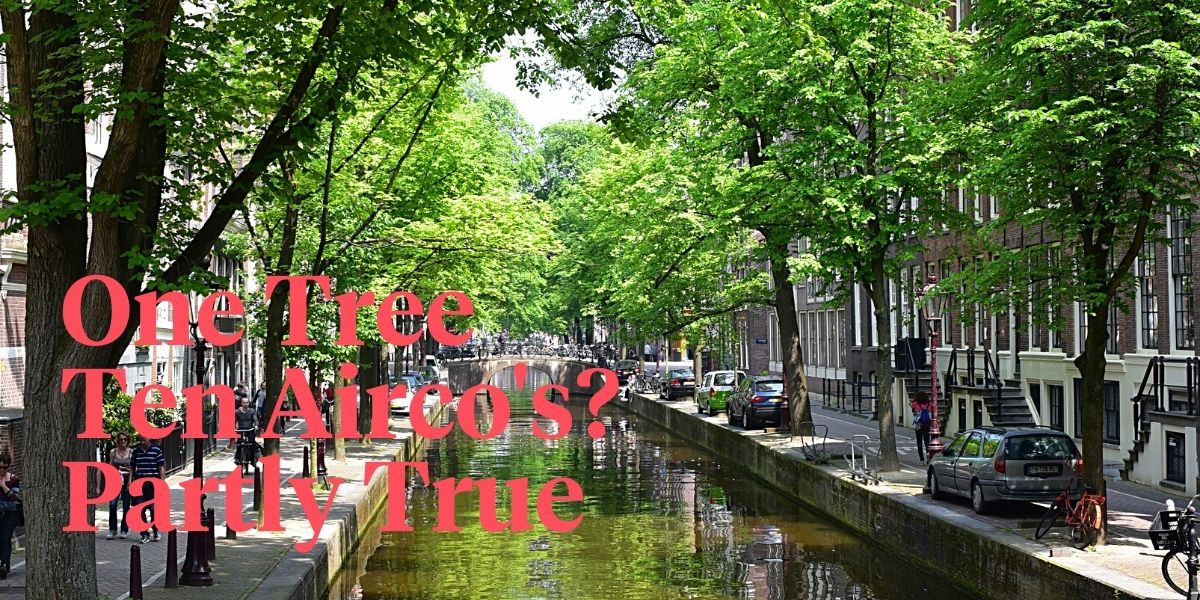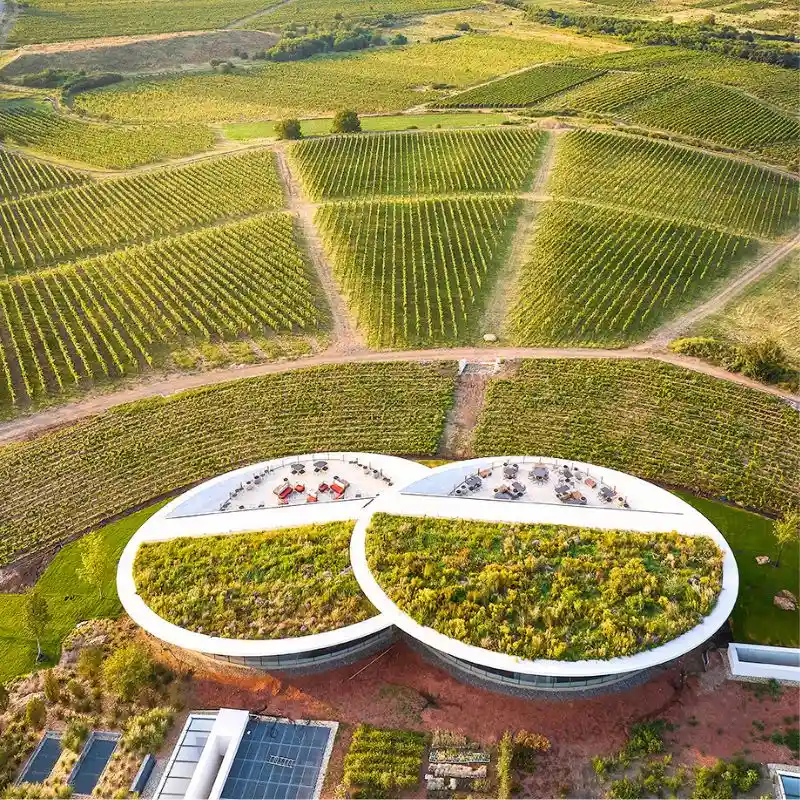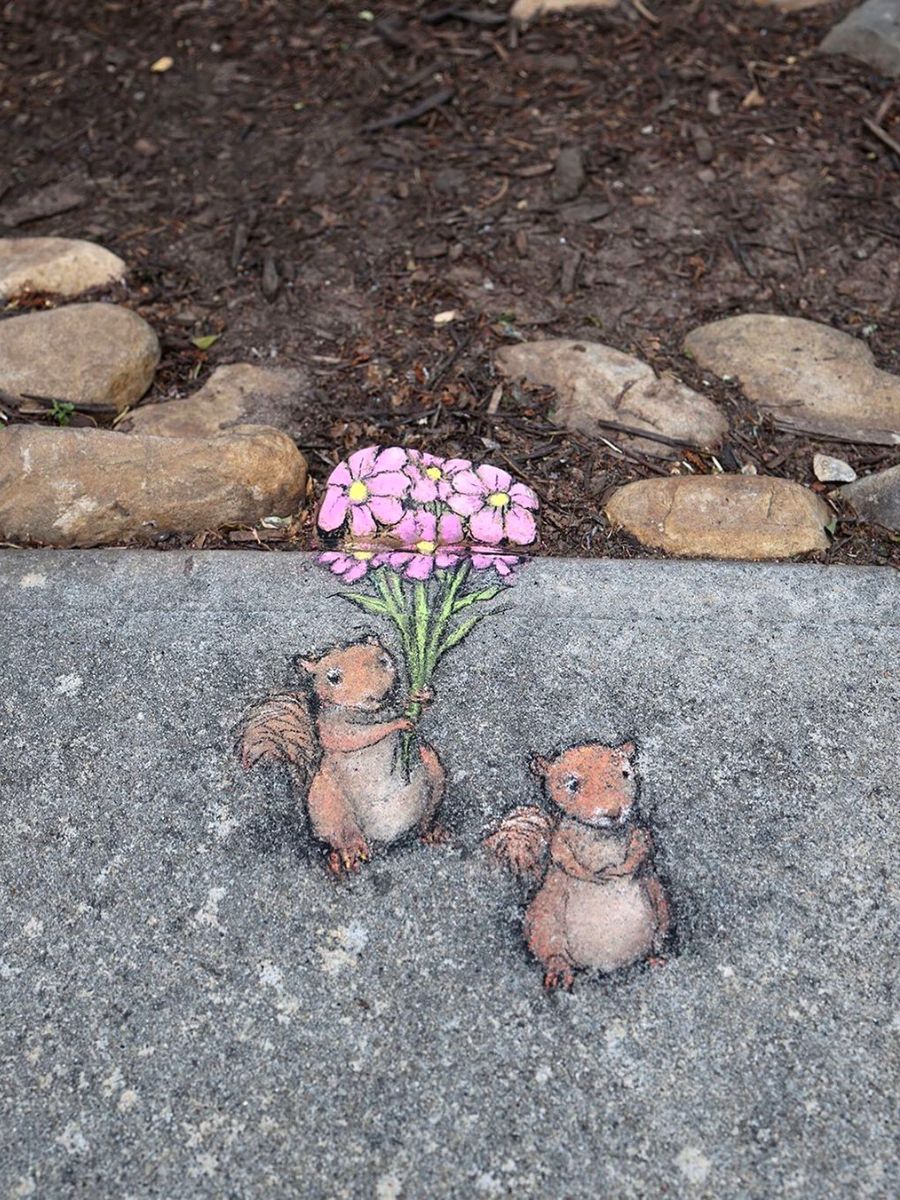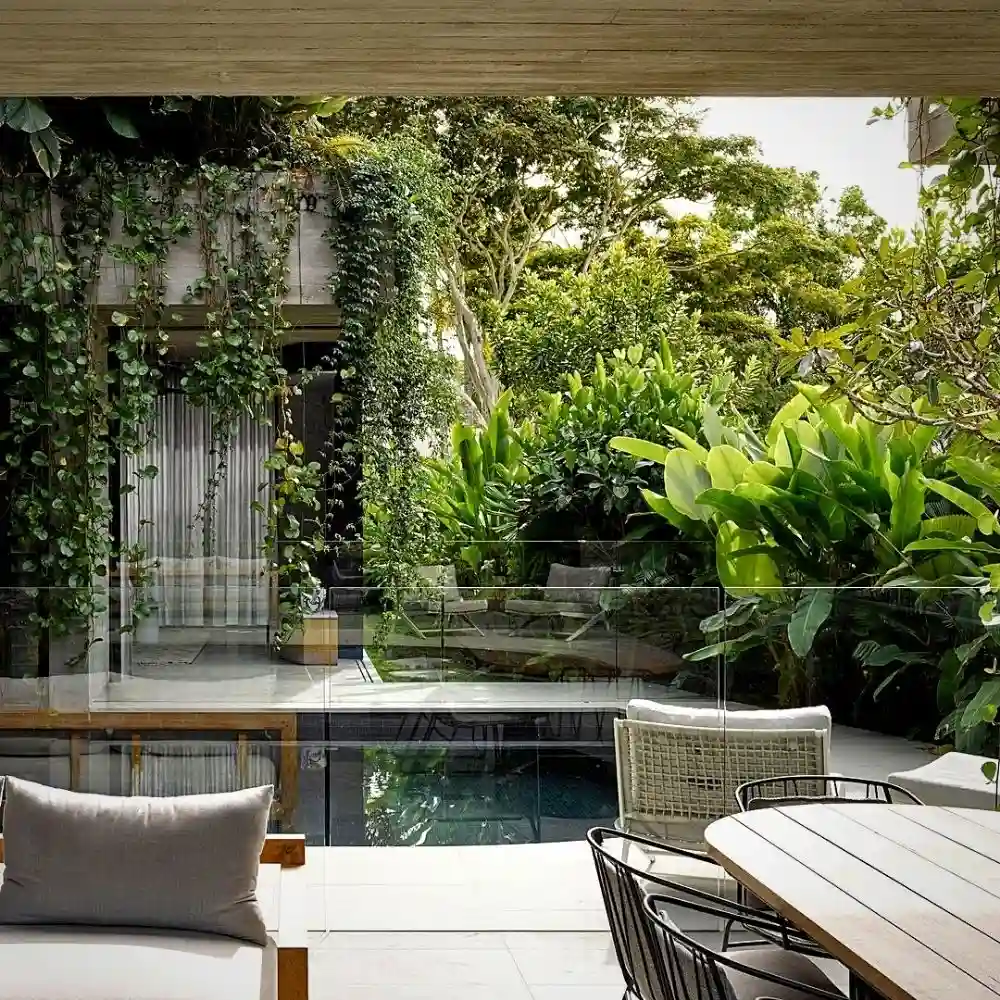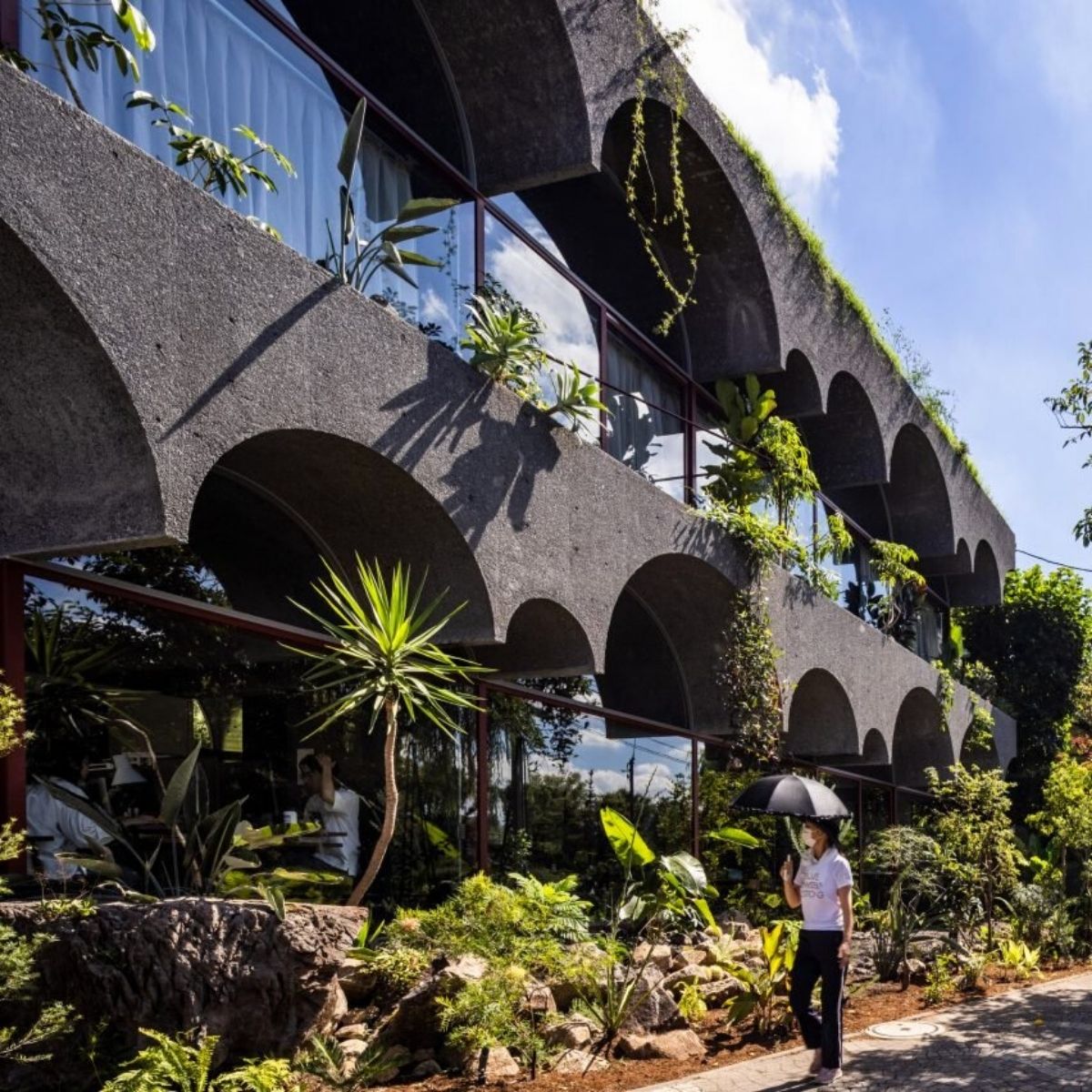There is still a lot of work to be done if we want to safeguard the quality of life and living in urbanized areas and restore it here and there. Green is needed for cooling. Lots of green! Everywhere!
Green in Cities to Bring Cooling
Green in cities? Very often this mainly refers to trees. Their shade and their cooling power are increasingly and constantly more strongly brought to the attention. Logical. Each tree is synonymous with ten air conditioners, it sounds. You score with that. Politicians like to take advantage of it while organizing planting campaigns and providing budgets for street and avenue trees.
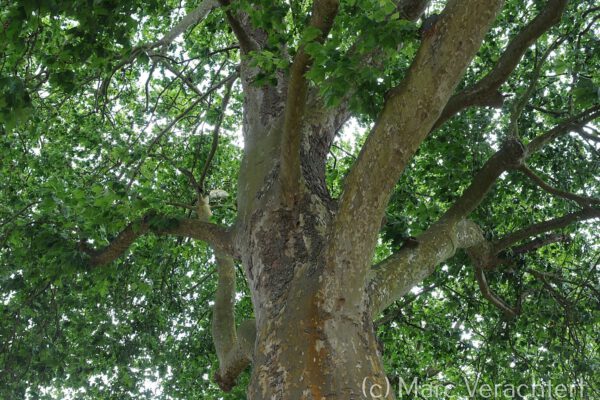
Pubic and City Trees
That it is a long wait for a maximum cooling capacity of trees and that it is only possible if the tree can grow tall and old and is given plenty of quality growing space, is seldom mentioned. So forget the "pubes" in too small "flower pots" on streets and squares, hidden between parked cars or neon signs from shopping streets. Instead, give one tree plenty of space and the chance to grow tall and Don't just look at what is visible above ground level. The rootable space is just as important.
“A rootable volume of 80 to 110 m2 gives a sustainable tree the chance to live to 120 years and reach a crown volume of 100 m2”
We paraphrase from the study 'Sustainable trees in an urban environment, yield and cost (see ecopedia.be) which Jos Schenk performed in 2017 with Tom Joye (Inverde), Lien van Langenhove and Christian Ysenbaardt (City of Antwerp). The search is on in urban areas so much land, although that surface can be (partly) using growing site constructions tucked away under the pavement. But that has its price. And that also calculated study.
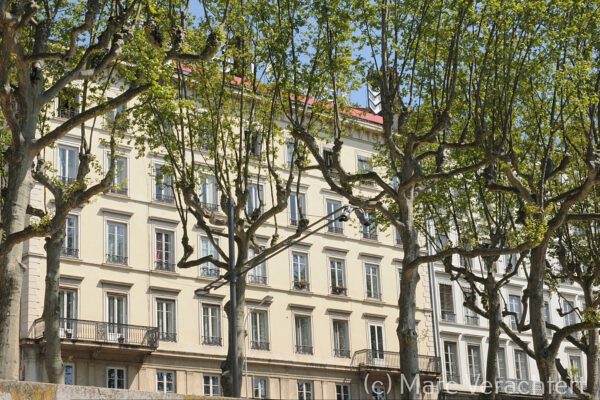
In a zone where pedestrians, cyclists, and passing slow-moving car traffic, is the estimated cost for a high-quality pressure distributing a layer of tree sand 20,000 euros. Gets there now or later heavy and/or fast-moving traffic over the root zone, then a self-supporting construction on plastic or concrete pillars needed and of course, also use of tree soil again. In this case, the cost increases to 40,000 euros. These are substantial amounts, but know that this study shows that this investment is more interesting than wanting to compensate with a larger number of 'flower pot trees' that have no chance of growing big and Paraphrased again from the study:
“From 0 to 15 years you need three unsustainable trees to achieve the (crown) yield of an equally old sustainable tree, between 15 and 30 years nine trees and after 60 to 75 years even 17. non-sustainable trees. Add to this that the visual and image-determining aspect of the non-sustainable trees is virtually nil, while the sustainable tree continues to grow more and better. ”
Planning or planting a sustainable or highly sustainable tree, therefore, means looking ahead. Also in terms of budget.
“From the age of 30 to 45, investing in a sustainable tree is more advantageous than continuing to plant saplings over and over again, at least for situations with light traffic,” says Jos Schenk.
Ground Sought
However, the tricky point remains that the subsoil in the public domain is not an exclusive area for tree roots. Also, drill utility lines and sewerage through it, usually without compassion for trees, aided by excavators and a drive for profitability. Divert to private property. It is a route that is worth exploring and at the same time a means of involving residents in caring for the environment and climate. The number of cities and municipalities that do this by the (free) distribution of climate trees, sometimes called oxygen trees and trees of the future, is manif But whether these trees will have a long future? More than once it is about species that are not suitable for (urban) gardens due to their vigor and later size.
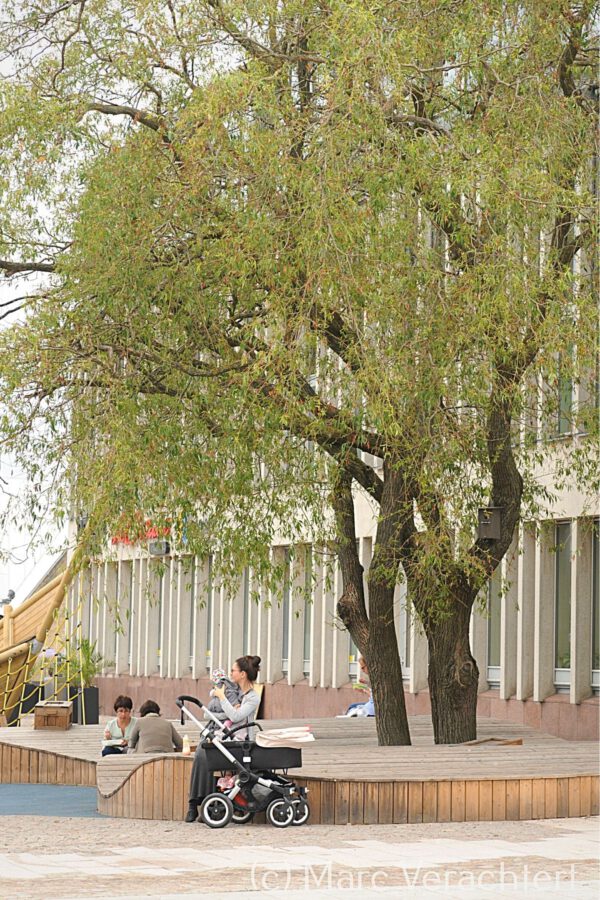
Bruges recently went for a completely different, original approach. They ask residents to plant "street trees" in the front gardens. The city takes care of the boom and the work. Which tree to choose is decided in consultation between the city and the garden owner. In the first three weeks after the launch of the call, 217 applications have already been submitted. They are screened for a number of conditions: easy accessibility, the possibility of planting at least 2 meters from the plot boundary, not hindering public lighting, being visible from the street, and remaining standing for at least 7 years. The aftercare is at the expense of the applicant.
One Tree, Ten Air Conditioners?
Who stated that a tree has the cooling capacity of ten air conditioners? Perhaps a study by Wageningen University in 2011 (see: https: // edepot.wur.nl/351459). Saelens, professor of building physics at the KULeuven:
“A large, mature oak, in perfect condition and well supplied with water, can use 400 liters per day. This gives me a power of 15 kilowatts. So more than five air conditioning units. Not ten. ”
However, it can be more, depending on the type and size of the tree and where it stands. In addition, air conditioners also differ in cooling capacity. So the comparison can still hold true, or to put it in Knack's words: this statement is partly true!
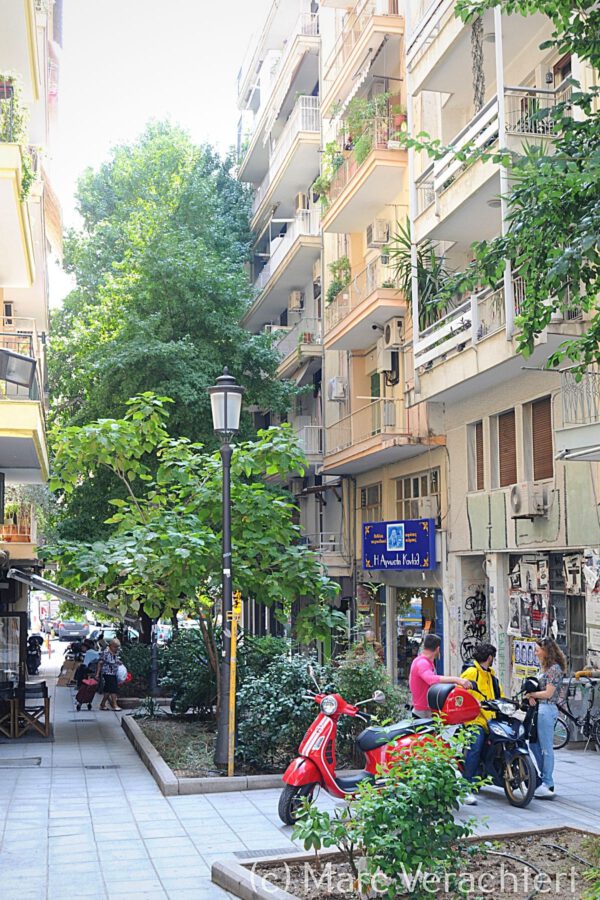
Green Roofs
In addition to trees, there are - fortunately - other options for adding greenery to urban centers. Think of the large area of flat and gently sloping roofs in your own city and neighborhood. For years there has been a strong focus on making that area greener. Here and thereby providing financial support, elsewhere by obligations with environmental permits. Justly. We will only focus on the cooling capacity and therefore impact the environment! Research (Minke und Witter 1982) shows that the temperature on a black bitumen roof in full sun can rise to 70-75 ° C in the summer, on a gravel roof up to 50 to 65 ° C, while using green roofs the temperature remains limited to approximately 30 to 35 ° C. ” Warming up of the environment by reflection and radiating absorbed heat in the evening or at night is hardly possible. PV panels also benefit. This is because they lose yield due to heating. According to specialists.
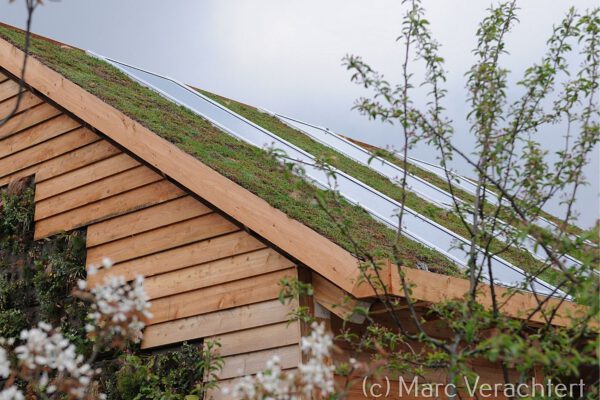
“Because the green roof tempers temperatures, you increase their efficiency ”
Green roof-Antwerp sticks figures on it and provides additional information:
“The green roof keeps the photovoltaic cells cooler, giving them 9 to 15% more efficiency. The lower ambient temperature simultaneously reduces the load and wear of the solar panels. Solar panels, therefore, last much longer on a green roof! "
It is information that, as advocates of climate measures and a better urban environment, are given arguments to convince owners, managers, and of course urban planners and their own administration to take (even more) action. Still a stumbling point here. Not all flat and slightly sloping roofs can handle the extra weight of a green roof. Older buildings in particular have a hard time bearing the extra weight, even though for a 4 to 6 cm thick substrate layer with succulents and succulents it is only 45 to 75 kg / m2. If you go for the better work, with a 10 to 25 cm thick - better insulating and water buffering - substrate layer, this quickly increases to 80 to 300 kg / m2 and for a 30 cm thick substrate even 360 kg / m2.
Cool Walls
Then walls are much easier to put in heat-resistant and ecologically and psychologically so important green. They are sturdy, offer support, and can be easily dressed with an insulating green layer. Living Walls score best in this respect. Against a south wall that can heat up to 70 ° C, they can easily reduce the heat to half! They are not only green but usually also "thick" and form a construction against or in front of the wall. They, therefore, perform just as well as a green roof and that from as good as the first moment. They are installed almost ready-to-use. Ground-bound greenery - read climbing and espalier plants - need time, because they have to grow, climb and close. Even if you start with big plants, it takes a while. On the other hand, they have a much lower cost price. Don't underestimate their effect! They also go for solid insulation, including the formation of an air layer between the wall and the leaf, the prevention of solar irradiation of the facade, radiation absorption through photosynthesis, and cooling.
Although situations cannot simply be compared, because differently oriented, differently grown, different surfaces, ... we still provide figures. We picked it from "Study of green walls and their contributions to a green liveable environment" (Tim Vereecken, Bachelor's thesis HOGent, 2017-2018), with reference to research in Greece (Kontoleon & Eumorfopoulou, 2009). The plant species used: Parthenocissus tricuspidata (Virginia creeper). On a north facade, the temperature difference between a bare facade and a green facade is 1.73 ° C on average. The plant cover provides for the east-facing facade a difference of 10.53 ° C. In the southern facade, the leaf cover causes a drop of 6.46 ° C. The temperature difference at the western facade between covered and uncovered is as much as 16.85 ° C.
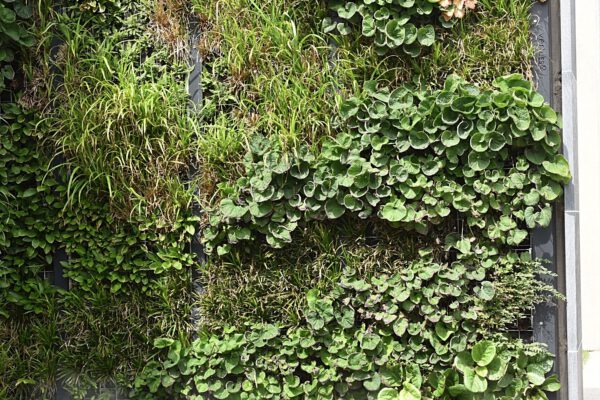
Fast Sprint With Ivy
The (still) high-cost price of Living Walls hinders a major breakthrough, even if it is offset by the minus price of facing brick or facade finishing that is required in those places. In addition, there are the maintenance costs, such as maintaining necessary irrigation systems and (more than once) necessary replacement of plants. The cheap alternative, land-bound greenery, has to deal with prejudices. Climbers and especially the self-adhesive climbing plants have a reputation for damaging facades and keeping them moist. However, this is almost only the case with old walls and especially those walls that have been grouted with marl and lime mortar.
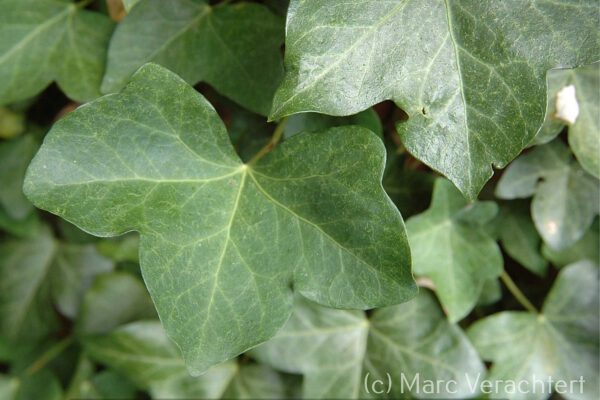
Climbing plants, especially evergreen climbing plants, keep the wall dry and in most cases even ensure a longer lifespan. Ivy, especially the small-leaved ivy (Hedera helix), has been praised as a wall covering in the most recent studies, including by the Royal Horticultural Society and the University of Reading. Ivy effortlessly over-classed Virginia creeper (Parthenocissus tricuspidata) and evergreen climbing hydrangea (Pileostegia or Schizophragma viburnoides) to keep heat away during the summer and to pressurize the building from excessive humidity throughout the year. (www.rhs.org. UK / science / articles / ivy-homes) Of course, the question remains of keeping the plants in check. Ivy always wants to be higher and wider than you have in mind as a designer or contractor. Curbing the plant annually requires cutting and pulling. However, that problem can now also be remedied with a trick that is known under the name "Ivy Stop". In short, it is an electrical limiting system that is fed by an electric fence device (see www.gggreen.eu) and can of course also be used for other adhesive climbers such as vine and climbing hydrangea. It virtually clears up the last obstacle to ground-bound greenery that decorates walls and keeps them cool, in both residential and industrial buildings. With walls that are decorated in this way and thus budget-friendly green, there may be resources left to suddenly fill the roofs green too! If this is supplemented with trees that can live a long and healthy life on private property and on public land, we are well on the way to a better and, above all, more climate-resilient Belgium. And you are guaranteed to be happy to contribute to that!
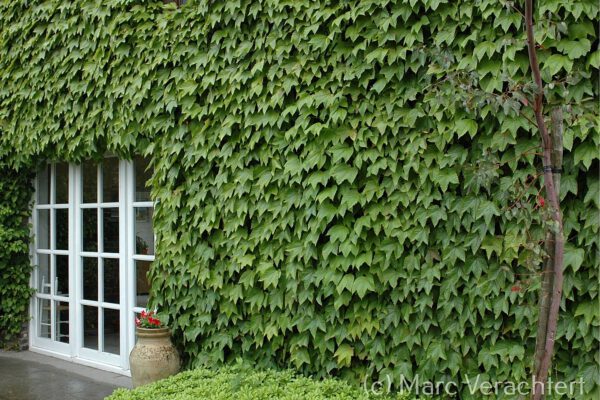
Coauthor Bart Verelst and I published the Pocket Book for the Climate Garden in 2020; a book about extreme temperatures, drought, and peak showers and how gardens can positively welcome climate change. In the gardens of the new generation, shade, climate-adaptive planting, using water sparingly, but also water evacuation, and biodiversity are of great importance. What until recently was experienced as "sweltering" and "tropical warm" changes in a Climate Garden to "pleasantly warm" and "wonderfully summer". And so it should be; it cannot be the intention for the gardener to look to the future summers with a bitter feeling. Pocketbook for the climbing garden, Lannoo Publishers, ISBN 9789401464833 Manuel pratique du jardin climatique, ISBN 9789401468619 CGConcept.be

